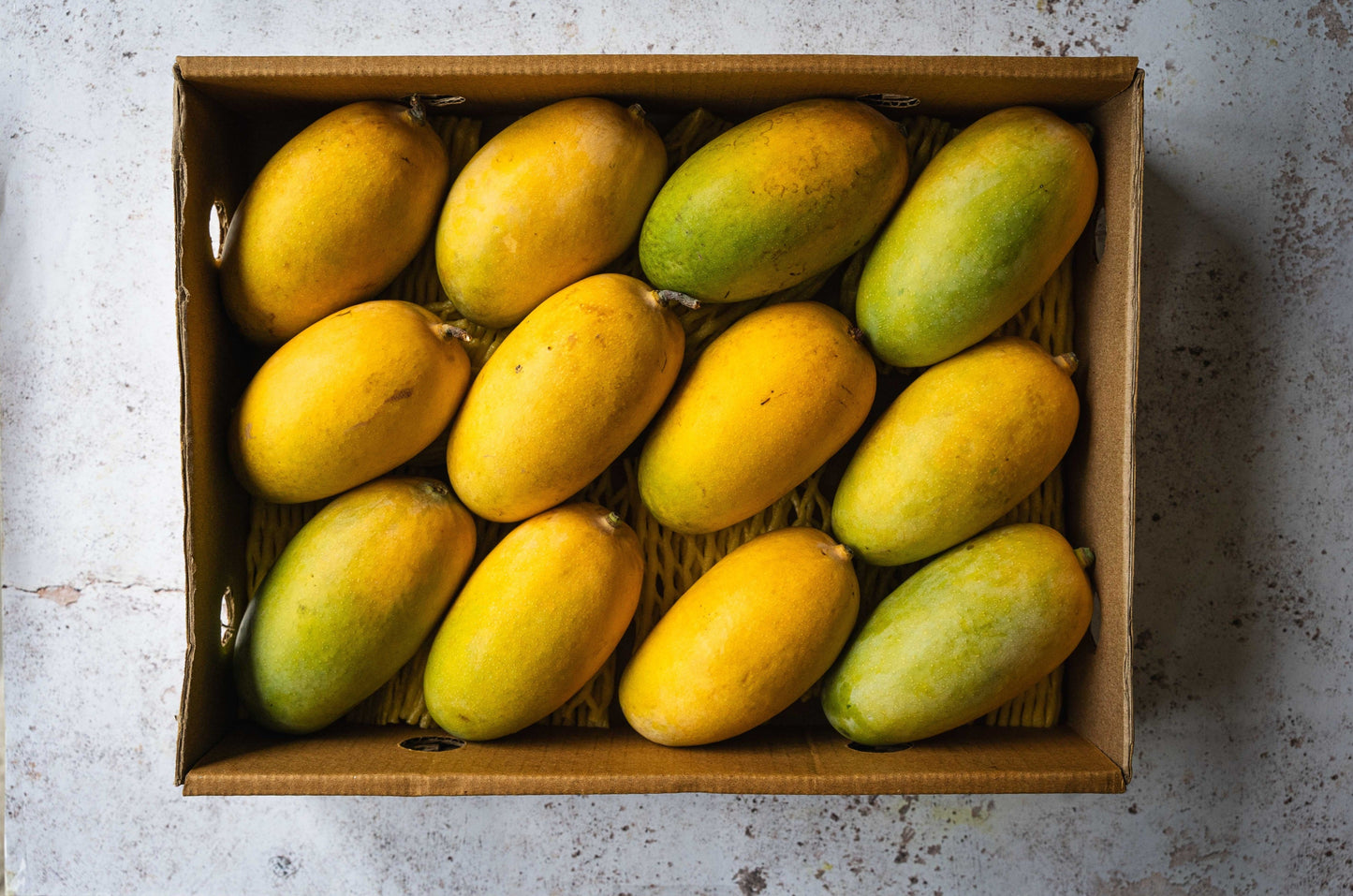Alphonso Mango
Kesar Mango – Box of 12 (UK Delivery)
Kesar Mango – Box of 12 (UK Delivery)
Couldn't load pickup availability
Fresh Kesar Mango (Gir Kesar) 🥭
Ships once a week — every Tuesday for orders received before Monday 12pm. Next Day Delivery after dispatch.
Price: £25.99 GBP • Seasonal product
Shipping: £6.99 flat fee (up to 3 boxes)
We carefully check each mango before packing. These are naturally grown fruits — not supermarket-perfect — so small blemishes or light wrinkling are normal.
We can’t cut open every mango, so we’re unable to refund for any internal issues. If there’s visible damage on the outside, send us a photo and we’ll review it.
To enjoy them at their best, keep your mango at room temperature and eat within 3 days of arrival.
The Queen of Mangoes
Authentic Gir Kesar mango, known as the “Queen of Mangoes.” Each box contains 12 handpicked fruits, flown fresh from Gujarat and packed carefully for UK delivery.
- Sweet, rich and aromatic flavour with honeyed, floral notes
- Vibrant saffron-orange pulp, smooth and almost fibreless
- Medium size (200–250g each), rounded shape
- Perfect for eating fresh, smoothies or desserts

Delivery & Dispatch (UK Mainland)
We ship every Tuesday for orders received before Monday 12pm. Delivery is via DPD Next Day and typically arrives within 1–2 working days.
UK mainland only (London, Birmingham, Scotland included). Tracking is provided with every order.
Exclusions: Northern Ireland, Isle of Man, Isle of Wight, Scottish Highlands, other offshore locations.
Ripeness & Storage
How we ship: We send mangoes slightly firm so they travel well. Let it ripen at room temperature.
Timing: Usually ready to eat within 2–3 days of arrival. To speed things up, place in a paper bag with a banana or apple.
Price & Value
Box of 12: £25.99 GBP (approx. 2.5–3kg per box). Approximate price per kg: £8.60–£10.40 (box price ÷ total box weight).
Buy more, save more — fixed £6.99 shipping covers up to 3 boxes.
Freshness Promise & Returns
We carefully check each fruit before packing. Natural marks or small blemishes can occur.
Because we can’t cut fruit open, we can’t refund for internal issues. If there’s visible external damage, send us a photo to info@alphonsomango.co.uk within 24 hours and we’ll review it.
FAQs
When is Kesar mango in season?
Peak season is May to July, depending on the harvests.
Where do you source Kesar mango?
Direct from Gujarat — mainly Junagadh and Amreli districts in the Gir Kesar region.
Do you sell Jumbo Kesar mango?
Standard size is 200–250g each. Larger “Jumbo” fruit is rare and not part of our usual offer.
How does Kesar differ from Alphonso?
Kesar: smooth, honeyed sweetness with floral notes and mellow creaminess. Alphonso: sharper tropical punch, buttery texture and more intense tang. Read the full comparison
Do you deliver outside mainland UK?
Not at present — delivery excludes NI, Isle of Man, Isle of Wight and the Scottish Highlands.
Multi-Box Savings
Order more than one box to save on the price per box and reduce shipping costs. Shipping is fixed at £6.99 for up to 3 boxes.
Share

Absolutely amazing. Pricey, but worth it
Kesar and Alphonso mangoes delivered in perfect condition. No old fruit here. All nearly ripe and so all in excellent condition. I wouldn't buy mangoes from anyone else.
Absolutely delicious kesar mangoes. Delivery was excellent. I would recommend these especially for a present! Excellent company also.
Beautiful tasty mangoes delivered in perfect condition.
Proper kesar mangos
What a treat!

